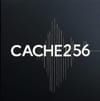The DAO Briefing: Coordination Without Control
DAOs aren't communities, they're programmable power. From treasury to governance, control is shifting on-chain.
The DAO Briefing: Coordination Without Control
CACHE256 · June 2025
DAOs aren’t communities. They’re programmable jurisdictions.
A new architecture for human coordination at scale—frictionless, borderless, trustless.
What started as governance experiments now control billions in liquidity, shape protocol upgrades, and fund global infrastructure. But alignment ≠ decentralisation. And power ≠ evenly distributed.
DAOs coordinate. But they also concentrate.
CACHE256 · June 2025
DAOs aren’t communities. They’re programmable jurisdictions.
A new architecture for human coordination at scale—frictionless, borderless, trustless.
What started as governance experiments now control billions in liquidity, shape protocol upgrades, and fund global infrastructure. But alignment ≠ decentralisation. And power ≠ evenly distributed.
DAOs coordinate. But they also concentrate.
Strategic Context
DAOs manage over $20B across 10,000+ collectives (Dune, DeepDAO).They route capital, execute policy, and encode governance.
→ Gnosis Safe secures 80% of DAO treasuries
→ Snapshot handles 60% of votes off-chain
→ 3 wallets control 40% of MakerDAO governance
DAO ≠ decentralisation. DAO = programmable coordination.
And that coordination increasingly routes through a few critical rails.
Core Stack
🧱 Base Layer: Ethereum L1 and L2s (Arbitrum, Optimism, Base)🔐 Execution Layer: Smart contracts (Compound Governor, OZ modules)
🗳️ Governance Layer: Snapshot, Tally, Discourse
💼 Treasury Layer: Gnosis Safe, Zodiac modules
🧬 Identity Layer: ENS, Sismo, ZK attestations
DAOs are tech stacks. The stack decides the power flow.
Control the interface → influence the vote → capture the treasury.
Friction Points
⚠️ Voter Apathy: 85%+ of tokens don't vote (Snapshot, 2025)⚠️ Whale Capture: Token weight = voting power
⚠️ Regulatory Vectors: MiCA and FATF push DAO KYC
⚠️ UX Centralisation: 90%+ of DAO votes occur via app frontends
DAO governance is programmable, but it's rarely equitable.
Coordination ≠ consensus. Sometimes, it's coercion in disguise.
Emerging Patterns
→ Soulbound tokens for contribution-weighted governance (Optimism, 2025)→ ZK-voting for pseudonymous participation (zkVote, Sismo)
→ AI summarisation for proposal routing (Aragon Clarity)
→ Cross-chain DAO models (LayerZero, CCIP)
DAOs scale fast. But fragility hides beneath speed.
If governance can’t scale with capital, failure becomes structural.
Strategic Posture
DAOs are programmable institutions.They don’t remove control. They relocate it.
📍 Long DAO infrastructure (Aragon, Tally, Gnosis)
📍 Hedge with privacy rails (zk-voting, off-chain reputation)
📍 Watch for state-capture via regulation-as-code (GENIUS Act, MiCA)
Token governance is not neutral.
Those who write the contract → write the power.
Final Transmission
DAOs are not hype.They’re institutional logic made programmable.
Voting is surface layer.
Issuance, interface, infrastructure: those are the rails.
Don't participate. Architect.
CACHE256: Strategic intelligence in code.
